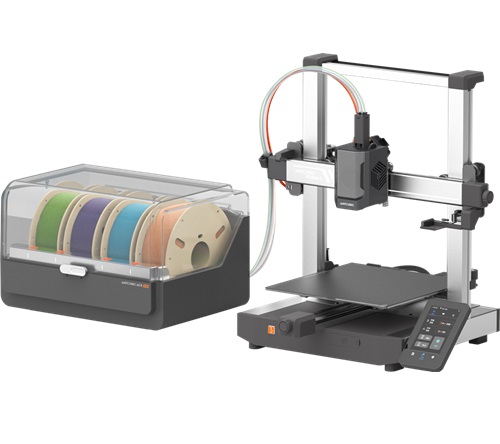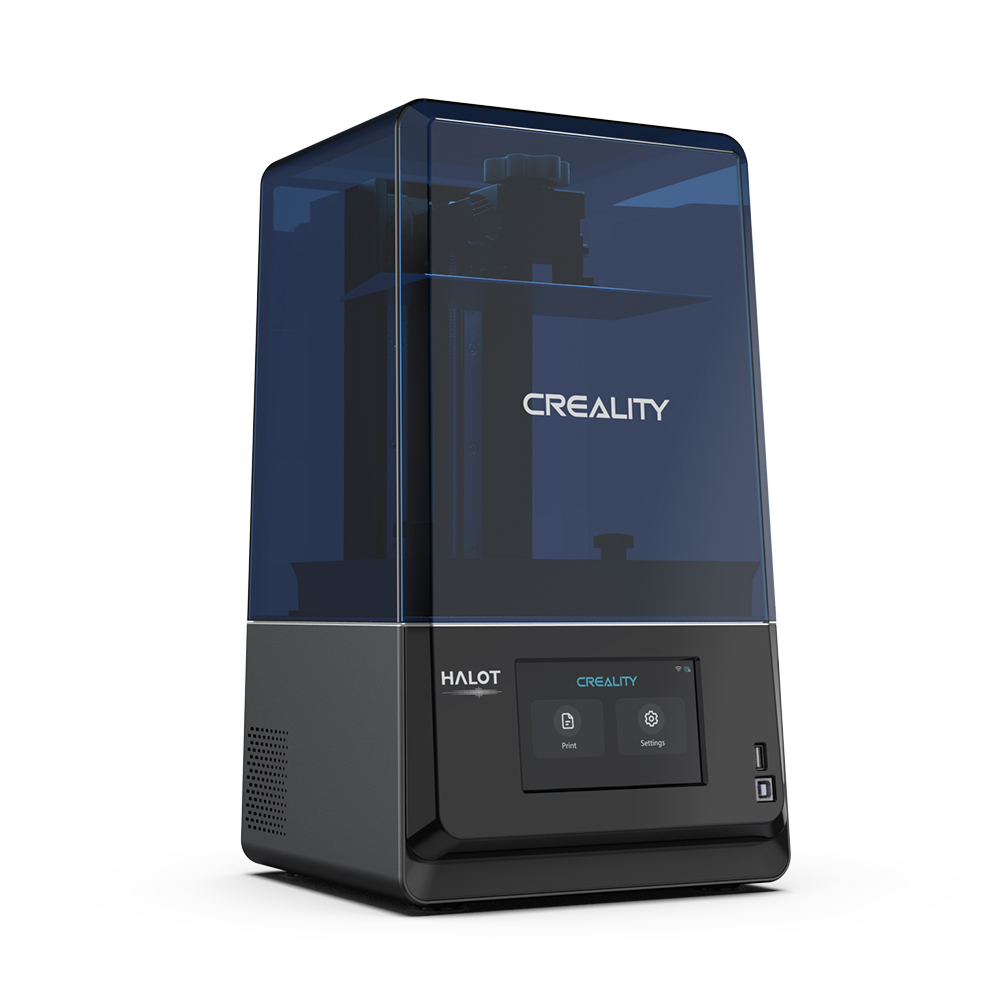Compare Kobra 3 Combo vs Halot One Plus
Comparison between the best 3D printers
Choose the best 3D printer at the best price. The cheapest 3D printers are here.
Buy a 3D printer here with 3D Fila.
 |
 |
|
| Model | Kobra 3 Combo[BUY Kobra 3 Combo] |
Halot One Plus[BUY Halot One Plus] |
| Printing Material | Filament | Resin |
| Buy Filament for Anycubic Kobra 3 Combo | Buy Resin forCreality 3D Halot One Plus | |
| Estimated price | $349,00 | $399,00 |
| Manufacturer | Anycubic | Creality 3D |
| Release Year | 2024 | 2022 |
| Print Volume [mm] | 250x250x260 | 102x172x160 |
| Printer Size [mm] | 452x504x483 | 236x245x416 |
| Weight [kg] | 9,2 | 6,8 |
| Power Loss Recovery | YES | NO |
| Maximum Resolution [mm] | 0,1 | |
| Processor | 32 bits | |
| Display | Touchscreen 4,3'' | |
| Power Supply | 400 W | |
| Connectivity | USB, Wi-Fi, Cloud | USB / Wi-Fi |
| Operating systems | Windows, Linux, Macbook | |
| Date of registration in the system | 2024-06-27 | 2022-10-11 |
| Release date | 2024 | 2022 |
| Extra features | The Anycubic Kobra 3 Combo offers advanced features, including multi-filament printing with the ACE (Anycubic Color Engine) system, allowing for quick switching of up to four filaments. It features automatic bed leveling, nozzle clogging detection, and integrated filament drying during printing. The printer supports technical materials such as ABS, ASA, Nylon, and PC, thanks to the hotend that reaches 300°C and the heated bed up to 110°C. In addition, it has a 4.3-inch touchscreen and compatibility with various slicers such as Anycubic Slicer, Cura, and Orca Slicer. | Crealitys Halot-One Plus printer stands out for its 4K+ resolution that delivers sharp details and consistent surfaces. It features a fast and responsive 5-inch LCD interface, as well as easy-to-use Halot Box software. It offers Wi-Fi connectivity and remote print monitoring, as well as an integrated air filtration unit, a rare feature in this price range. The Halot-One Plus is designed for the prosumer market, combining high quality with advanced features such as Wi-Fi and air filtration. During testing, it stood out for implementing these features at an affordable cost, while maintaining functionality. It features an attractive design with a UV-resistant blue cover and a robust dual rail system for the Z-axis, ensuring smooth and consistent movements. The large LCD and high resolution of the LCD mask (4320 x 2560) are other strong points, allowing for fine details and textures in prints. |
| Support for multiple colors and materials (AMS and CFS) | YES | NO |
Notes * |
||
| Cost-benefit | 8 / 10 | 8 / 10 |
| Hardware | 4.5 / 10 | 1.4 / 10 |
| Tela | . | . |
| Print volume | 4 / 10 | 3 / 10 |
| Performance | 5 / 10 | 9 / 10 |
| [BUY Kobra 3 Combo] | [BUY Halot One Plus] |
Conclusion |
| In conclusion, the comparison between the Anycubic Kobra 3 Combo and the Creality 3D Halot One Plus highlights several key distinctions that cater to different user preferences and needs in the 3D printing realm. The Kobra 3 Combo, with its larger print volume and advanced features like multi-filament printing and automatic bed leveling, positions itself as a versatile option for users who prioritize extensive material compatibility and ease of use. Its ability to manage diverse technical materials—combined with features like power loss recovery and a touchscreen interface—makes it an appealing choice for hobbyists and professionals seeking comprehensive functionality. On the other hand, the Halot One Plus excels in high-resolution printing with its 4K+ capabilities, targeting users focused on achieving detailed and high-quality finishes in their prints. Its compact design, integrated air filtration, and user-friendly software make it well-suited for environments where space is a concern and air quality is prioritized. Additionally, the responsiveness of its LCD interface and robust build quality contribute to a seamless printing experience. From a cost perspective, both printers offer solid value for their respective features, with the Kobra 3 Combo being slightly more expensive yet packed with advanced capabilities. Ultimately, the choice between these two printers will depend on the user's specific requirements—whether prioritizing larger build sizes and multi-material applications, or focusing on high-resolution output and a compact, specialized design. |

